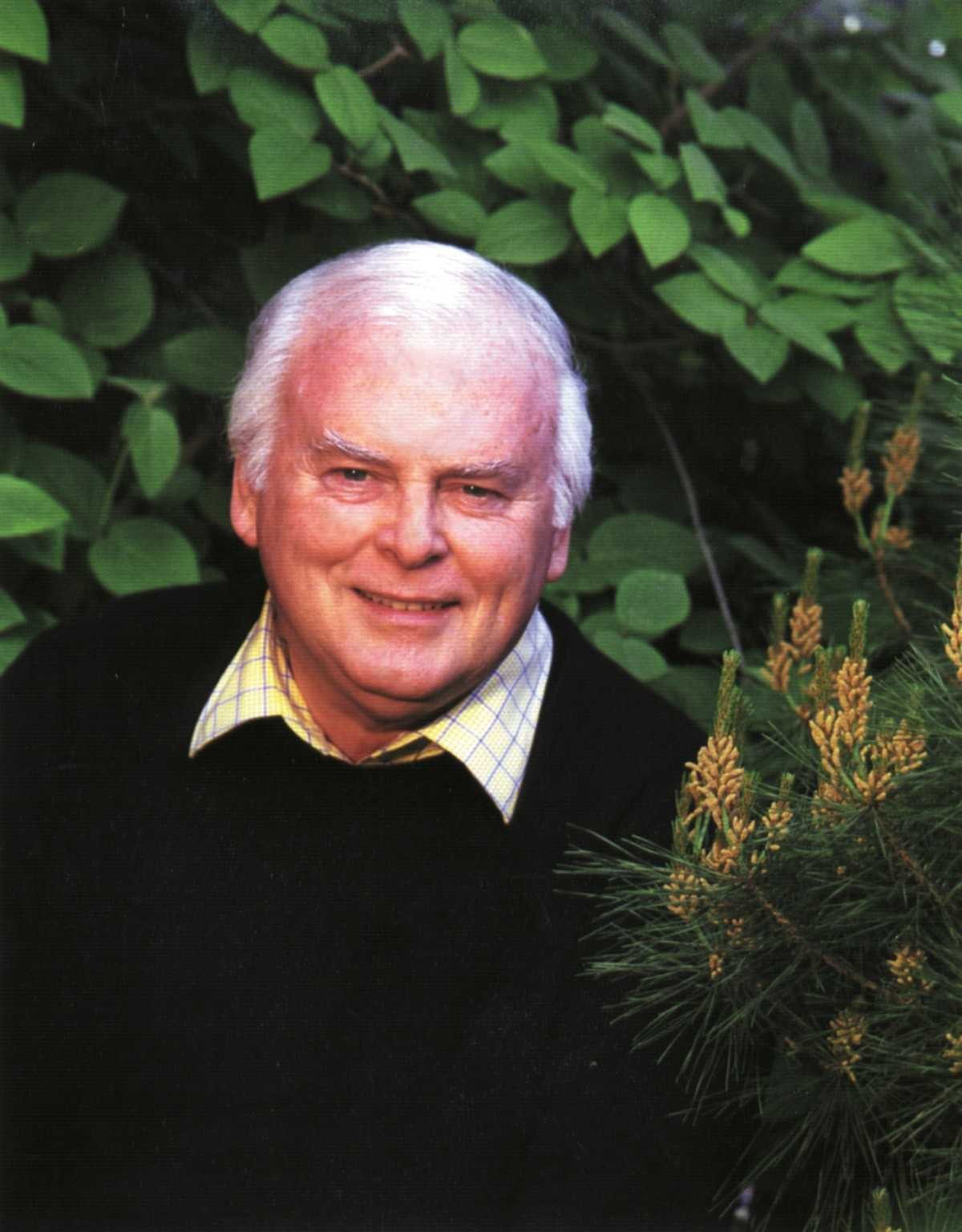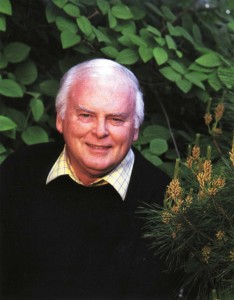
Avid pilot and sailor Stuart Woods has penned more than 35 books, often incorporating his own flying experience.
By Clayton Moore
Bestselling author Stuart Woods has lived a life of adventure that reads better than some people’s fictional exploits. At least he doesn’t get hit over the head as often as the characters in his 35 bestselling, action-packed crime novels.
As an avid pilot, Woods traverses the country and the world as nimbly as his most popular fictional hero, Stone Barrington. In fact, you can find the tail number of the author’s Piper Malibu Mirage JetProp—N123TF—in several of his books.
“I have quite a bit of flying in the books, and a fair amount of sailing as well,” Woods said. “My tail number shows up in the book because I don’t want to use someone else’s tail number or make one up.”
In 2001’s “Orchid Blues,” starring popular series character Holly Barker, Woods inadvertently used N123TF on two different airplanes. His readers noticed, and he still gets comments about the minor gaffe.
It’s a small worry for an author who has risen from his humble roots in rustic Georgia to become one of the most prolific crime novelists in America. It’s taken a lot of time and effort to get to this point. Woods now publishes two novels each year.
“The reason I’m able to write more fluently now is simple confidence,” he said. “After you’ve written more than 30 books, you begin to feel like you can do this. All writers are saddled with feelings that they might not be able to finish the next one, but I think I’ve gotten past that now. It’s easier to write a little more quickly.”
From rural Georgia to overseas
Nearly all of his books are tied in some way to his hometown, Manchester, Ga. Woods was born on Jan. 9, 1938, in the small town nestled up against the formidable Pine Mountain Ridge. He’s fictionalized the town as Delano, Ga., a rural enclave he first made famous in his groundbreaking, award-winning novel, “Chiefs.”
Woods graduated from the University of Georgia with a bachelor’s degree in sociology and moved to Atlanta, where he enlisted in the Air National Guard, while working in a men’s clothing store to make ends meet. In the fall of 1960, he moved to New York to start a writing career but was sidetracked into a decade of advertising work. He spent the greater part of the turbulent decade working for Madison Avenue agencies, except for the 10 months he spent in Mannheim, Germany, with the National Guard. He was based there from 1961 to 1962, during the diplomatic crisis that involved the Berlin Wall’s construction.
The Big Apple wasn’t peaceful enough for Woods to jumpstart his literary career, so on an impulse, he moved to London. There, he worked in advertising agencies for three years, as his debut novel started to come together. He moved on to Dublin, Ireland, where he worked two days a week for an ad agency, writing fiction in his small flat near a castle in South County Galway.
Sailing adventures

Stuart Woods flies to book signings in his Piper Malibu Mirage JetProp, modified with a Pratt & Whitney PT6A-35 turbine engine.
Woods completed 100 pages of a novel before he discovered sailing. After that, he recalled, “everything went to hell.”
“I had been sailing dinghies,” he remembered. “I came into a little bit of money, which was just enough to get me into debt for a boat. I was footloose and fancy-free, trying very hard not to finish that novel, because the idea of actually being done with it was scary.”
He spent 18 months learning about sailing and celestial navigation, while his boat was being constructed in Cork, Ireland. Woods went far beyond sailing as a hobby. In 1976, he competed in the Observer Single-handed Transatlantic Race, a yacht race that started in Plymouth, England, and ended in Newport, R.I. He completed the race in 45 days, finishing in the middle of the fleet, in the smallest boat.
“It was a formative part of my life,” he said. “I think I grew up about that time. I just had this idea to start sailing and decided to do it. Sometimes it was too exciting.”
That may be an understatement. Woods competed in the disastrous 1979 Fastnet Challenge Cup, a yachting race in England. Storms that year caused the deaths of 17 competitors, leading to the overhaul of the rules and equipment requirements, although Woods and his team finished in good shape. Later that same year, he sailed a friend’s yacht across the Atlantic, stopping at ports in the Azores, Madeira and the Canary Islands, before finishing at Antigua in the Caribbean.
First flights
Returning from Ireland in 1976, Woods went home to Georgia, where a left turn into national politics also led him to his ongoing interest in aviation.
“I was working for Jimmy Carter as his campaign’s advance man in Plains, Ga.,” Woods remembered. “It was exciting that someone from Georgia was running. Some friends working on the campaign encouraged me to get involved. I did, and I had a great time.”
During the free time between his campaign responsibilities, Woods took to the air.
“I took my first flying lessons in 1976,” Woods recalled. “My job was to come to Plains when the governor came home and ride herd on the press and the Secret Service, getting them transported and housed. Once they were ensconced, I didn’t have that much to do, until I had to repeat the whole process in reverse. So I began taking flying lessons at a little grass strip called Peterson Field.”
Unfortunately, he had a slight delay in pursuing his pilot’s license.
“The campaign would send a Cessna 172 to pick me up wherever I was and fly me back,” Woods said. “I was able to get in a little cross-country time that way. By the time the campaign ended, I had about 17 hours. But I didn’t have much money to fly an airplane and no situation in my life that an airplane would have improved at that point.”
While dabbling in flying lessons, Woods wrote two non-fiction books: “Blue Water, Green Skipper,” a memoir of his experience living in Ireland and participating in the OSTAR competition, and a travel guide called “A Romantic Guide to the Country Inns of Britain and Ireland.” Both books are out of print.
“You’d have to go to a lot of garage sales to lay your hands on one,” Wood jokes.
Will Lee and “Chiefs”
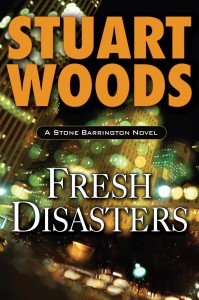
Readers can look forward to buying “Fresh Disasters” in April, which pits Stone Barrington against the New York mafia.
Woods got a $7,500 advance for the novel he started in his little flat in Dublin, based on the dramatic first 200 pages he showed the publisher. With contract in hand, he rolled up his sleeves, got to work and finished the book not long afterwards.
In 1981, W.W. Norton in New York published “Chiefs,” a book Woods had been imagining since childhood and one of his finest works of fiction. The epic novel, which was re-released in a special 25th anniversary edition last year, is an ambitious, multigenerational story of murder and corruption in the south. It spans 50 years, beginning in 1919 with the first police chief’s appointment in fictional Delano, and leads up to the life of Will Henry Lee, a failed cotton farmer who becomes the newly installed police chief.
“I didn’t consciously set out to write a crime novel,” Woods said. “I began with a novel that was centered on a crime but was primarily about my hometown and my family history.”
The hugely successful book won the Edgar Allen Poe Award from the Mystery Writers of America and was hailed by critics. While it only sold 20,000 copies in hardback, the paperback version sold with gusto. “Chiefs” was also made into a popular television miniseries starring Wayne Rogers as Will Henry Lee. The cast also included Charlton Heston, Danny Glover, Billy Dee Williams and John Goodman.
Lee appears in a half-dozen other Woods novels, including more recent entries, “The Run” and “Capital Crimes,” which bring the character to Washington, D.C., as an earnest senator from Georgia. Lee remains a favored character among both readers and his creator.
“In many ways, Will Lee is my favorite, because I feel the closest to him,” Woods said. “He and I are more alike. ‘Chiefs’ continues in some ways through the Will Lee series, because he’s part of that same family.”
Woods married in 1984 but the marriage ended in 1990. The union inadvertently led him back to flying.
“My wife was a partner in a law firm,” he recalled. “They bought a 182 RG for the senior partner. They called it the firm airplane, so I had access to it. I started taking lessons again, and in very short order, I got my private license and a few months later, my instrument rating.”
Writing tough guys
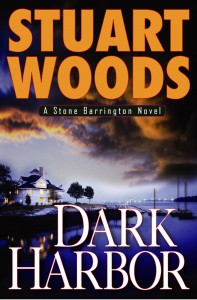
Stuart Woods’ most recent Stone Barrington novel is the 2006 thriller “Dark Harbor,” which finds his series hero investigating murders in Maine.
With seven novels under his belt, Woods decided to introduce a new character in 1991’s “New York Dead.” It proved a wise decision, as the book’s protagonist, a hard-hitting police officer named Stone Barrington—who later evolved into a globetrotting attorney—became his most popular character.
“Stone Barrington is certainly my readers’ favorite character,” Woods acknowledged.
Woods is complimentary yet candid about Barrington’s flaws.
“Stone’s ability to improvise is his virtue,” Woods said. “He’s not the smartest guy in the world, simply because I’m not the smartest guy in the world. I have a theory that a writer can’t convincingly create and sustain a character that’s smarter than that writer. So Stone is no smarter than I am, and he makes mistakes; he gets hit over the head a lot as a result. But when he has to be, he’s tough. When his life’s on the line, he’s able to scramble out of tough situations.”
Woods laughs and says that his character’s vices are “all connected to being a bachelor.”
“Sometimes he sleeps too late,” he explains. “From time to time, he has a few too many drinks at (New York hotspot) Elaine’s and feels a little worse for wear the next morning. He’s not able to form a permanent relationship with a woman, because women keep dumping him.”
Stone Barrington returns in April in “Fresh Disasters,” a new adventure that finds the crime fighter cozying up to a powerful New York mob boss.
“Cozy is one word for it,” Woods said. “The lynchpin for the events in this book is a character named Herbie Fisher, the bane of Stone Barrington’s existence. Herbie is the sort of guy who almost never gets anything right and often gets it terribly wrong. Stone is involuntarily involved when Herbie decides to sue a major Mafioso named Datilla, also known as ‘Datilla the Hun,’ because two of Datilla’s hoods beat him up. No one can convince Herbie that you don’t sue mob guys, because it’s very dangerous. It becomes dangerous for Stone as well.”
Readers can look forward to another adventure, “Shoot Him If He Runs,” in October 2007. The book will feature Stone Barrington as well as the return of Will Lee from “Chiefs” and small-town sheriff Holly Barker, who’s recently moved up to the Central Intelligence Agency.
“I often bring in other series characters; my readers seem to like the surprise of encountering other people they know,” Woods said. “It seems to particularly please them when Stone and Holly wind up on the same page.”
Although New York is home base to both Stone Barrington and Stuart Woods, both author and fictional creation get around. The author divides his time between Manhattan, Florida and Maine, with frequent trips to more exotic locations overseas. Meanwhile, Stone Barrington’s adventures have taken him to London, Palm Beach and New England, among other settings, and the hard-hitting attorney is off to the Caribbean in “Shoot Him If He Runs.”
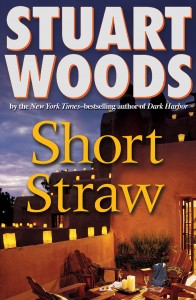
Stuart Woods doesn’t confine his crime novels to urban settings. Recently, “Short Straw” saw the return of the author’s Santa Fe, N.M. defense lawyer, Ed Eagle, who was introduced in “Santa Fe Rules.”
“It’s to keep me from getting bored,” Woods says of his penchant for using exotic locales. “If everything happened on New York’s Upper East Side, I might start to feel constricted. I’ve sent him to London, the West Coast and all sorts of places to get things done. I like kicking Stone out of the city every now and then.”
Although he’s a well-known brand name in the mysteries and thrillers genre, Woods doesn’t read any of his contemporaries, choosing instead to fortify himself with Winston Churchill’s six-volume history of World War II.
“I don’t read in my genre at all, because I don’t want to be influenced,” Woods explained. “I think it would be terrible to even inadvertently borrow someone else’s idea and would be even worse to get caught doing it. I read history, because I find it fascinating. I’m especially fascinated by World War II, because I’m old enough to remember it as a child.”
Airplanes, old and new
With the success of his many novels, the author has been able to indulge his fondness for flying. Woods has owned four airplanes, including the law firm’s Cessna, a Beechcraft Bonanza B36-TC and his initial Piper Malibu Mirage. He currently flies his second Mirage, a six-passenger, pressurized aircraft that has been converted to a jet prop.
The Mirage is so comfortable that Woods fondly refers to it as a “miniature Air Force One.” It’s also a utilitarian tool for the busy writer; he uses the Mirage to get to book signings and other appearances.
“I do two book tours per year, with the shorter one in the fall,” Woods explained. “In the spring, I always go to the L.A. Times Book Festival, which is my favorite event. I work my way out there and back in the Piper.”
In fact, readers probably wouldn’t get to meet their favorite characters’ creator if it weren’t for his airplane.
“I don’t know if I would do book tours if I couldn’t fly myself,” Woods said. “It saves my publishers a bit of money, and it makes me more flexible, in terms of the places I’m able to go to meet readers. Every once in a while I have to cancel an appearance, because thunderstorms are between me and my destination, but it happens very rarely.”
In addition to his aircraft, Woods also maintains his enthusiasm for watercraft. He keeps a 28-foot power boat at his winter home in Vero Beach, Fla., and is a partner in a 1935 85-foot motor yacht called Enticer. He’s also looking at upgrading into a new aircraft.
“I’ve moved up through the ranks of these aircraft,” he said. “I’m looking at the PiperJet, but deliveries are four years away, and a lot could go awry during the certification process to slow it down even more. I’m also considering the Cessna Mustang. I’ve flown a CJ1 and was very impressed with it. Cessna definitely knows how to build airplanes.”
Though he’s under no financial pressure to land a new airplane, he’s eager to get into one of the new jets.
“I’m just hoping I’ll be able to get myself into one before I’m too old to fly them,” he exclaimed.
For more information about Stuart Woods and his novels, visit [http://www.stuartwoods.com].











